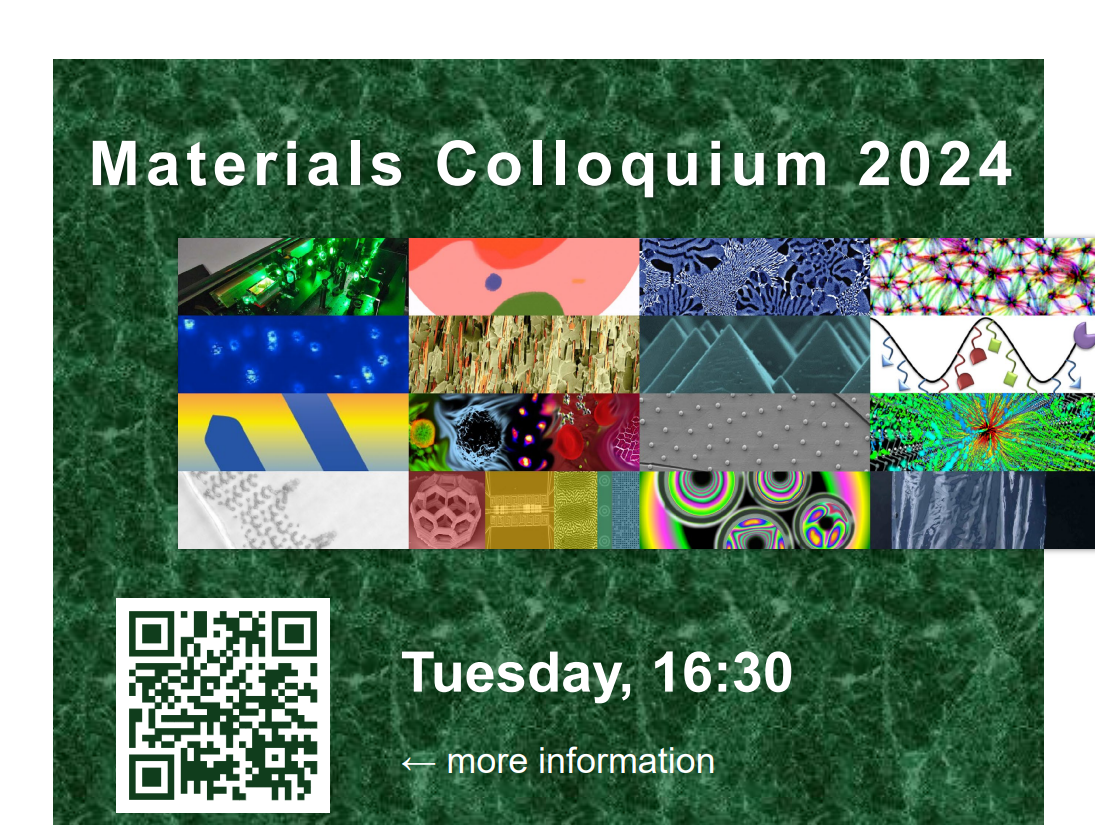In-person in HCI J4:
Elastic Microphase Separation Produces Bi-continuous Materials
Carla Fernández-Rico (Laboratory for Complex Materials — D-MATL)
Phase separation is a fascinating physical process that is not only responsible for the internal organization of living cells but also a promising tool for structuring soft materials. The central challenge in making meso-structured materials via phase separation is the lack of structural control at length scales beyond the macromolecular scale. In this talk, I will introduce Elastic MicroPhase Separation (EMPS) as a route to create bi-continuous structures in the scale of hundreds of nanometers inside elastomeric networks. I will present the analysis of the microstructure, phase equilibria, and kinetics of the system, and show how it features aspects of both nucleation and growth and spinodal decomposition. Finally, I will demonstrate the potential our approach by toughening polymeric materials, and making bi-continuous structures with controlled structural and anisotropic gradients.
Unravelling Plasmonic Photoelectrochemistry at Macro- and Micro-scales
Giulia Tagliabue (Laboratory of Nanoscience for Energy Technologies, EPFL)
In the last decade, plasmonic and dielectric nanoantennas have revolutionized light manipulation and control at the nanoscale. Interestingly, hot carriers and photoluminescence in metals have opened new pathways for controlling photo(electro)chemical processes and monitoring temperatures. Yet, fundamental questions remain about the microscopic details of these complex light-matter interactions. We have recently developed a well-controlled experimental platform based on ultrathin monocrystalline gold flakes and scanning electrochemical microscopy that, in combination with theory, enables deeper insight into light absorption and emission processes as well as photochemical transformations. In particular, I will present micro-scale photoelectrochemical measurements clarifying the interplay of hot carrier generation/transport and quantifying the injection probability of high-energy d-band holes at the metal-electrolyte interface, connecting it to the ultrafast dynamics of these carriers in monocrystalline metals. Overall, this microscopic insight is critical to advance the design of plasmonic-based energy devices. I will also show complementary results unraveling the origin of luminescence in gold and how crystallinity improves hot carrier dynamics and transport.
